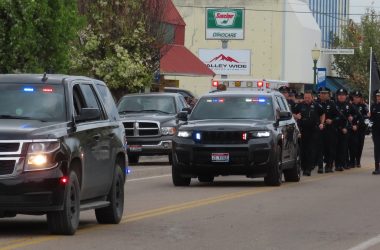Malheur County was spared during the Great American Eclipse. In spots, traffic was congested but the county wasn’t overrun by people. No serious accidents blocked roads. No serious property damage, assaults or other crime could be traced to our moment in the moon’s shadow. We did gain increased comfort that our public agencies can anticipate and prepare for a huge-scale event.
For months, the forecasts in Oregon produced awe. State officials predicted 1 million people would flood into the state for the spectacle. For Malheur County, estimates hit 30,000 or more – doubling the county’s population for the eclipse weekend. Imagination took over about what that would mean. Would roads become parking lots? Would bread and milk and gas get scarce? Would city slickers burn the county down around us with careless smoking and driving?
While the rest of us could muse about the possibilities, others couldn’t. Public officials, especially in public safety agencies, had front line duty to protect us and our guests. So did the medical community – Saint Alphonsus Medical Center, medical clinics, and medics.
For months, officials met and plotted. The extraordinary work cut across government boundaries. Leaders from city, county, state and federal agencies met regularly over the past year. They strengthened their knowledge of each other’s capabilities. More importantly, they strengthened personal ties that help any bureaucracy function more seamlessly.
Perhaps one of the most important steps these officials took was devising their own estimates. The prospect of 30,000 people, if true, would demand considerable resources. But Brian Wolfe, Malheur County sheriff, said local officials looked into their own crystal ball and dialed that back considerably – to about 10,000. And when it was all over, Wolfe said, the county had about 6,000 eclipse visitors.
The more realistic forecast helped public officials dial minimize the need overtime, additional bodies, more equipment, and more outside help. Malheur County citizens never saw what didn’t need to be brought in. What they should know, though, is the better forecast meant more thrifty government. Agencies did spend in overtime, but nowhere near what would have been required by the high estimate.
Frankly, the media didn’t help with those forecasts. You could feel the entire state shudder when miles-long traffic lines made the news out of Prineville. News teams treated that as an example of what all of Oregon faced. That turned out to be a wild exaggeration. Fortunately, local officials didn’t get stampeded into overreacting themselves, instead holding course to their plans.
So, that meant Nyssa Police Department was ready to escort students from Nyssa and Adrian for eclipse watching in Ontario. That meant sheriff’s deputies could get to congested areas, particularly around Farewell Bend, to smooth the outflow of traffic. Ontario’s forces were ready when a car rally unexpectedly brought an estimated 200 people into downtown the Saturday night before lights out. And Oregon Department of Transportation crews were ubiquitous, reacting quickly as need to keep Malheur County moving.
If there were any glitches, they weren’t major. The eclipse afforded all of our agencies the chance to test themselves in reality, not the pretend circumstances of a drill. They should hold one more eclipse meeting – an after-action debriefing to see what lessons are learned or what successes there were that can be examples for the future.
As we emerge from our long eclipse shadow, Malheur County residents should know that if our area ever faces a major disaster, the people in charge are better prepared than ever to respond. They showed as much with their recent performance. – LZ



